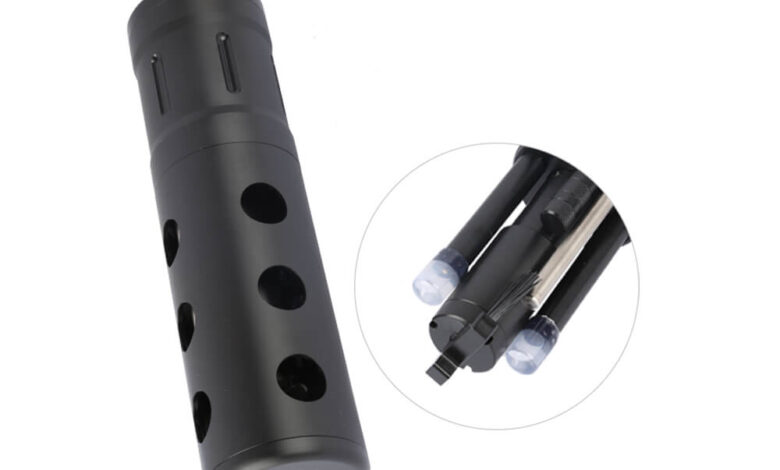Ammonium Sensors in Agriculture: How They’re Reducing Water Pollution and Enhancing Sustainability

In the face of increasing water pollution and environmental degradation, the agricultural sector plays a significant role in the contamination of water resources. One of the main contributors to water pollution is nutrient runoff, particularly ammonium. Excessive ammonium, primarily from fertilizer use, can lead to eutrophication in water bodies, harming aquatic ecosystems and reducing water quality. However, with the advancement of Ammonium sensor, there is now a solution to reduce the environmental impact of agriculture while enhancing sustainability.
In this blog post, we will explore how ammonium sensors are revolutionizing agricultural practices, helping to prevent water pollution, and improving sustainability in farming.
The Problem of Ammonium in Agriculture
Ammonium is a nitrogen compound commonly found in fertilizers used by farmers to enhance crop growth. Nitrogen is a vital nutrient for plants, but its overuse or improper management can lead to significant environmental challenges. When excessive ammonium is applied to crops or when fertilizers are used inefficiently, runoff can occur. This runoff carries ammonium into nearby rivers, lakes, and groundwater, resulting in several environmental issues:
1. Eutrophication
Eutrophication occurs when excess nutrients, including ammonium, enter water bodies, promoting the rapid growth of algae. This algae bloom can deplete oxygen in the water, leading to hypoxic or anoxic conditions. In turn, this suffocates aquatic life, leading to fish kills and loss of biodiversity.
2. Water Contamination
High ammonium levels in drinking water pose risks to human health, particularly for infants. Long-term exposure to elevated ammonium levels can lead to health problems such as methemoglobinemia (blue baby syndrome) in newborns. Ammonium contamination also affects the aesthetic quality of water, making it unsuitable for recreational activities.
3. Soil Health and Fertilizer Efficiency
Excessive ammonium use not only impacts water quality but also reduces soil health. Over time, excess ammonium can lead to soil acidification, making it less fertile and productive. Moreover, inefficient fertilizer application can result in higher costs for farmers and contribute to the overall inefficiency of agricultural systems.
The Role of Ammonium Sensors in Agriculture
Ammonium sensors are revolutionizing the way farmers manage nutrients and reduce the environmental impact of agriculture. These sensors can monitor ammonium levels in soil, water, and runoff, providing real-time data that can help optimize farming practices. Here’s how ammonium sensors are making a difference in agriculture:
1. Optimizing Fertilizer Application
The most significant way ammonium sensors help reduce water pollution is by optimizing fertilizer use. Fertilizers are essential for crop growth, but the right balance is critical. Ammonium sensors help farmers monitor the ammonium levels in soil and irrigation systems, enabling them to adjust fertilizer application based on the crop’s real-time nutrient needs. By applying the correct amount of fertilizer at the right time, farmers can avoid excess runoff and minimize ammonium pollution in water systems.
Benefits:
-
Reduced Fertilizer Waste: Sensors help prevent the over-application of ammonium, which reduces both fertilizer costs and environmental harm.
-
Improved Crop Yields: By providing the necessary nutrients in precise quantities, crops can grow optimally, resulting in better yields.
-
Efficient Resource Management: By using fewer chemicals, farmers save money, and the agricultural system becomes more resource-efficient.
2. Monitoring Runoff and Water Quality
Ammonium sensors installed in irrigation systems or along the edges of agricultural fields can track nutrient levels in runoff water. This allows farmers to identify areas where ammonium is washing into nearby water bodies. By detecting high ammonium concentrations in runoff, farmers can take preventive actions, such as altering irrigation practices, adjusting fertilizer application, or creating buffer zones to reduce nutrient loss.
Benefits:
-
Preventive Measures: Early detection allows farmers to adjust practices before ammonium levels in water exceed harmful thresholds.
-
Protection of Local Water Resources: Ammonium sensors help protect surrounding water bodies from contamination, supporting local ecosystems and reducing the risk of eutrophication.
-
Compliance with Regulations: Many regions have stringent environmental regulations regarding nutrient runoff. Using ammonium sensors helps farmers stay compliant with these rules.
3. Reducing Soil Acidification
Excess ammonium in the soil can lead to soil acidification, which degrades soil health and reduces long-term productivity. Ammonium sensors provide valuable data on soil nutrient levels, helping farmers assess the ammonium content and adjust their practices accordingly. With this information, farmers can reduce the amount of ammonium fertilizer used and implement practices to correct soil pH if needed.
Benefits:
-
Soil Health: By maintaining optimal ammonium levels in the soil, farmers can protect soil health, promoting sustainable agricultural practices.
-
Long-Term Sustainability: Reducing soil acidification helps maintain soil fertility over time, ensuring that crops remain productive for years to come.
4. Supporting Precision Agriculture
Precision agriculture is an innovative farming approach that relies on technology, data, and analytics to optimize farming practices. Ammonium sensors are a key component of precision agriculture, as they provide accurate, real-time data on ammonium concentrations. This data helps farmers make informed decisions on irrigation, fertilization, and crop management, ensuring that resources are used efficiently and sustainably.
Benefits:
-
Data-Driven Decisions: Ammonium sensors provide precise data that help farmers make decisions based on actual conditions, rather than estimates or generalized assumptions.
-
Sustainability: By using data to optimize practices, farmers can reduce their environmental footprint while increasing crop yields.
-
Increased Profits: The efficiency gains from precision agriculture help farmers reduce costs and increase profitability by ensuring that resources are used effectively.
Case Study: Ammonium Sensors in Action
In a pilot project in the Midwest United States, farmers integrated ammonium sensors into their irrigation systems and fertilizer management practices. These sensors provided real-time data on the ammonium levels in soil and irrigation water, allowing farmers to adjust their fertilizer use based on actual crop needs.
The results were remarkable:
-
Fertilizer Use Reduction: Farmers reduced their fertilizer use by 15-20%, leading to lower costs and reduced environmental impact.
-
Water Quality Improvement: Ammonium concentrations in runoff decreased by 30%, significantly reducing the risk of eutrophication in nearby water bodies.
-
Improved Crop Yields: Despite using less fertilizer, the crops yielded higher output, demonstrating the benefits of targeted fertilization.
This case study highlights how ammonium sensors can lead to tangible environmental and economic benefits, proving that technology can be a powerful tool in creating sustainable agricultural practices.
The Future of Ammonium Sensors in Agriculture
As the agricultural industry faces mounting pressures to improve sustainability and reduce environmental impacts, the role of ammonium sensors will continue to grow. Future developments in sensor technology will make ammonium sensors even more accurate, affordable, and widely accessible to farmers of all scales. Additionally, the integration of ammonium sensors with other precision agriculture technologies, such as drone monitoring and satellite data, will provide a more holistic approach to farm management.
Moreover, as regulatory pressures increase and consumer demand for sustainably produced food rises, ammonium sensors will become essential for farmers who want to stay competitive in an evolving market.
Conclusion
Ammonium sensors are playing a transformative role in the agricultural sector by providing real-time data that helps optimize fertilizer application, reduce nutrient runoff, and protect water quality. Through their ability to monitor ammonium levels in soil, water, and runoff, these sensors help farmers make more informed decisions, reduce environmental pollution, and enhance sustainability. By integrating ammonium sensors into their practices, farmers can ensure healthier ecosystems, better water quality, and more efficient, sustainable agricultural operations.
As the world strives for more sustainable food production systems, ammonium sensors are set to be a key technology in helping farmers meet environmental challenges while maintaining productivity and profitability.



